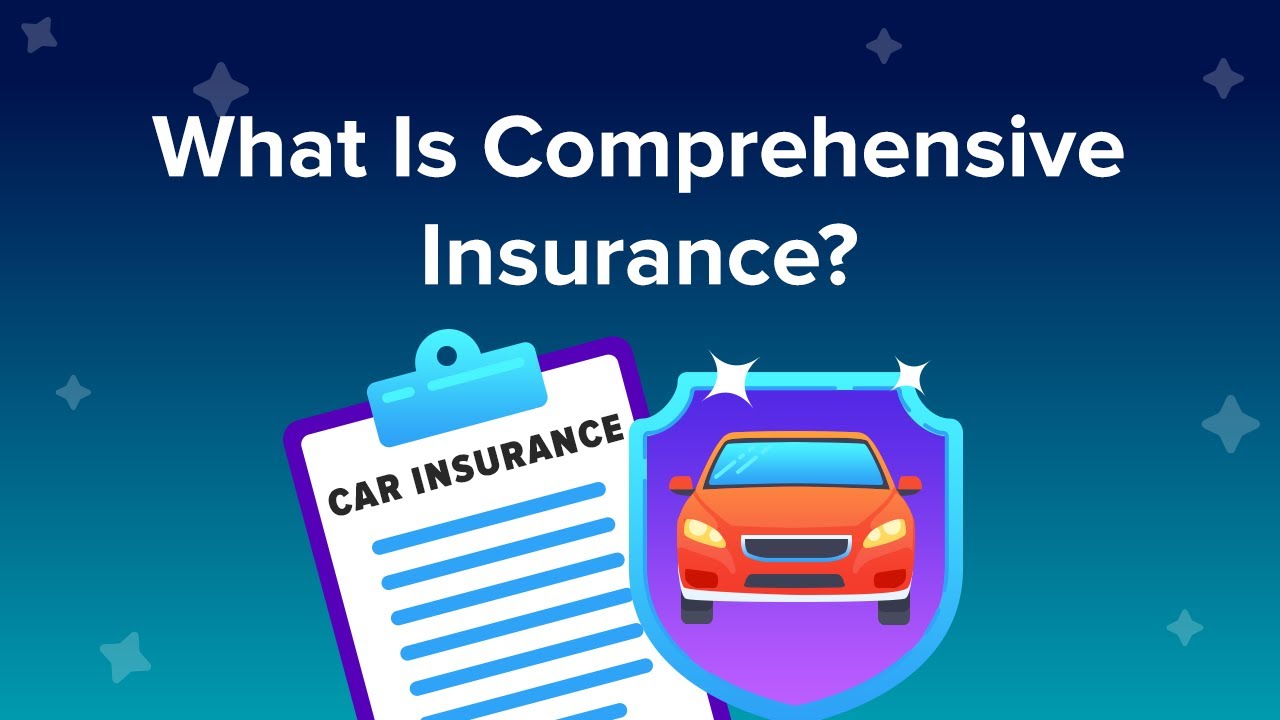Comprehensive car insurance, often a source of confusion for many, offers a robust safety net beyond the basic coverage provided by liability insurance. It’s designed to protect you from a wide range of unexpected events, ensuring financial security in the face of adversity. As HuyThanh.org emphasizes, understanding the nuances of this coverage is crucial for making informed decisions about your vehicle’s protection. This comprehensive guide will delve into the intricacies of comprehensive car insurance, clarifying what it covers, what it doesn’t, and how to choose the right policy for your needs.
What Does Comprehensive Car Insurance Cover?

Unlike liability insurance, which primarily covers damages you cause to others, comprehensive insurance steps in to protect your own vehicle from a vast array of perils. Think of it as a comprehensive shield against unforeseen circumstances. Here’s a detailed breakdown of what’s typically included:
Collision Damage: This covers damage to your car resulting from a collision with another vehicle or object, regardless of fault. This is a crucial component, especially if you’re involved in an accident where you’re at fault or the other driver is uninsured.
Comprehensive Damage: This is where the true breadth of comprehensive insurance shines. It covers damage caused by events outside of collisions, such as:
- Fire: Damage caused by fire, whether accidental or malicious.
- Theft: Compensation for the theft of your vehicle, or damage sustained during an attempted theft.
- Vandalism: Repair or replacement costs for damage caused by vandalism, such as key scratches, graffiti, or broken windows.
- Natural Disasters: Coverage for damage caused by events such as floods, hurricanes, tornadoes, hailstorms, earthquakes, and even falling objects like trees or rocks.
- Animal Collisions: Repair costs resulting from collisions with animals, such as deer or birds.
- Weather Damage: Coverage for damage from severe weather events, such as wind damage, snow damage or ice damage.
Other potential coverages (depending on the policy): Some comprehensive policies may extend coverage to include things like:
- Emergency Roadside Assistance: This can cover towing, lockout services, flat tire changes, and other roadside emergencies.
- Rental Car Reimbursement: Compensation for the cost of a rental car while your vehicle is being repaired.
What Doesn’t Comprehensive Car Insurance Cover?
While comprehensive insurance offers extensive protection, there are certain limitations. Understanding these exclusions is essential to avoid disappointment later.
Wear and Tear: Normal wear and tear on your vehicle, such as tire wear or brake pad replacement, is not covered.
Mechanical Breakdown: Failures of mechanical parts, such as engine problems or transmission issues, are generally not covered under comprehensive insurance. This typically requires separate mechanical breakdown insurance.
Damage from Neglect: Damage resulting from the driver’s negligence, such as failing to maintain the vehicle properly, is usually not covered.
Damage from Illegal Activities: Damage incurred during illegal activities, such as racing or drunk driving, is typically excluded.
Certain Acts of God: While many natural disasters are covered, some extreme events, depending on the specifics of the policy, might not be included. It’s crucial to review your policy documents.
How Does Comprehensive Insurance Work?
When a covered incident occurs, you’ll need to report the damage to your insurance company promptly. This usually involves providing details of the event, along with any relevant documentation, such as police reports or photographs. The insurance company will then assess the claim, determining the extent of the damage and the amount of compensation you’re entitled to.
The process usually involves:
- Filing a Claim: Contacting your insurance company to report the incident.
- Damage Assessment: An assessment of the damage to your vehicle, either by an adjuster from the insurance company or a trusted repair shop.
- Repair or Replacement: The insurance company will either arrange for repairs at an approved shop or provide compensation for the cost of repairs or replacement, depending on the extent of the damage.
- Deductible Payment: You’ll likely be responsible for paying your deductible before receiving the insurance payout.
Factors Affecting Comprehensive Insurance Costs
The cost of comprehensive car insurance can vary significantly based on several factors. Understanding these influences is crucial for securing the best possible coverage at a reasonable price.
Vehicle Make and Model: The make, model, and year of your vehicle play a significant role in determining insurance premiums. Some vehicles are more expensive to repair, leading to higher insurance costs.
Driving History: Your driving record is a major factor. Accidents, speeding tickets, and DUI convictions can significantly increase your premiums.
Location: Insurance rates vary geographically. Areas with high crime rates or a higher frequency of accidents typically have higher insurance premiums.
Age and Gender: Younger drivers generally pay more for insurance due to higher risk profiles. Gender can also be a factor in some regions.
Coverage Level: Higher coverage limits and lower deductibles generally result in higher premiums.
Credit Score: In some states, your credit score can influence your insurance rates.
Discounts: Many insurers offer discounts for various factors such as safe driving, bundling policies, anti-theft devices, or completing defensive driving courses.
Choosing the Right Comprehensive Insurance Policy
Selecting the right comprehensive insurance policy involves carefully considering your individual needs and financial circumstances. Here’s a guide to help you make an informed decision.
Assess Your Needs: Consider the value of your vehicle and the potential risks you face. If you drive an older, less valuable car, you might opt for a higher deductible to lower your premiums. If you live in an area prone to natural disasters or theft, higher coverage might be warranted.
Compare Quotes: Obtain quotes from multiple insurance providers to compare coverage options and premiums. Don’t just focus on the price; carefully examine the coverage details.
Understand Your Deductible: Your deductible is the amount you’ll pay out-of-pocket before the insurance coverage kicks in. A higher deductible will lower your premiums, but you’ll have to pay more in the event of a claim.
Read the Fine Print: Carefully review the policy documents to understand exactly what is and isn’t covered. Pay close attention to exclusions and limitations.
Consider Additional Coverages: Evaluate whether you need additional coverages, such as roadside assistance or rental car reimbursement.
Comprehensive Insurance vs. Liability Insurance
It’s important to distinguish between comprehensive and liability insurance. Liability insurance is legally mandated in most places and covers damages you cause to others. Comprehensive insurance, however, protects your own vehicle from a broader range of perils.
Liability Insurance: Covers bodily injury and property damage you cause to others in an accident.
Comprehensive Insurance: Covers damage to your vehicle from a wide range of events, excluding those caused by collisions (unless collision coverage is included as part of a comprehensive policy).
Many drivers opt for both liability and comprehensive insurance for complete protection.
The Importance of Comprehensive Car Insurance
Comprehensive car insurance provides crucial financial protection against unexpected events. It offers peace of mind, knowing that your vehicle is insured against a wide array of potential damages. While the cost might seem significant, the potential financial burden of repairing or replacing a damaged vehicle can far outweigh the cost of premiums. It is a crucial element of responsible vehicle ownership.





